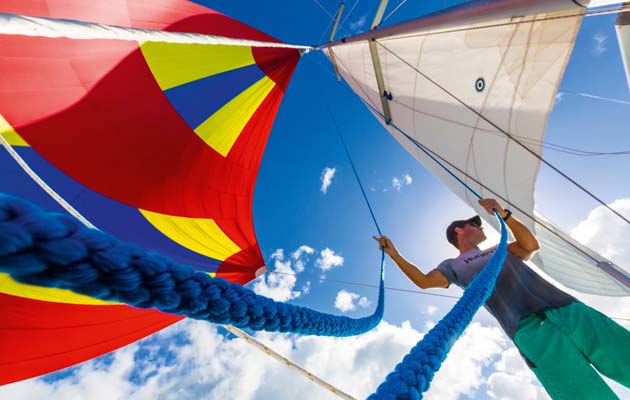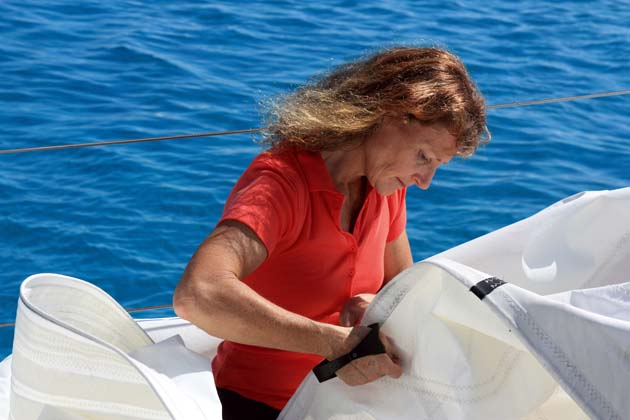New white sails
But while coloured downwind sails are really a matter of personal choice, crew strength and available budget, reasonable-quality white sails are an essential for several thousands of miles. Skippers in our survey had either equipped with new sails or had refurbished them. Considering reinforcing chafe points against rigging is particularly important downwind, especially if your rig has swept-back spreaders, as is UV degradation.
As for material, again it depends on the type of sailing you intend to do. Only one skipper in the racing division had opted for a suit of moulded sails – 3DL in this case. These are much lighter, hold a better shape and can remain fast for seasons, but they have to be carefully handled and not allowed to flog and they are unwieldy to handle, are harder to repair and considerably more expensive to buy.
It boils down to the value you put on performance, but these considerations help explain why Dacron is still the material of choice for budget-conscious, long-distance or short-handed cruisers.
A majority of the skippers in our survey had slab reefing with separate reefing pendants – a system that commends itself by having so little to go wrong – a few had single-line reefing and a couple in-mast furling. None reported any problems with either mainsail or headsail furling systems and, apart from one blown genoa, the good news is that white sails were generally trouble-free.
Sail options for an Atlantic crossing
Peter Kay from OneSails considers the choice
If it were my boat and I was setting out for year, I would have a main and furling genoa and two extra sails. The word ‘cruising chute’ doesn’t really describe what that sail is intended to do and is very often an all-purpose sail that is neither one thing nor the other and is disappointing.
If I had no pole, my preference would be a true running asymmetric spinnaker from fairly light cloth. Often people get a heavy reaching sail. I’d have less than 1oz, maybe 0.9oz. If I had a pole, I’d take a symmetrical spinnaker that can be kept up all night. Or twin headsails.
Then there’s the issue of reaching. In under ten knots the same downwind sail will do very adequately. If it’s blowing harder, you’ve got your cruising headsail. We favour a light No 1 with a relatively high clew set free-flying. You can use that upwind in five or six knots and use across the wind if the breeze comes up.
At bigger yacht sizes, there are plenty of reasons to contemplate high-tech materials. A free-flying reacher of Kevlar with a layer of taffeta set on a regular furler or, better still, in a snuffer, is good for lighter airs, though is more fragile. That’s the type of sail you might hear called a Code 0.
Running repairs
What should you take to repair sails, short of a full-scale sailmaker’s sewing machine? Says Peter Kay: “Take plenty of sticky stuff and a palm and needle. Anything with plastic film on the outside is very easily stuck together even with gaffer tape. If you end up with a hole, say from a spreader punching through, you need enough cloth and some sticky back.”
If you have a roll of 100mm wide heavy-duty sailcloth, plenty of glue or contact cement and some brushes, then you can back up that repair with stitching. Stitching these repairs will get any polyester sail back up in the air and working.
First start by rinsing the cloth off with fresh water. A problem may be getting the cloth dry enough for glue to work, but we have heard good reports of Dr Sails underwater glue and sails adhesive.
If the repair is to a spinnaker, using spinnaker tape may be a better bet than stitching at sea, because every new stitch in the cloth can end up being the start of a new break.






